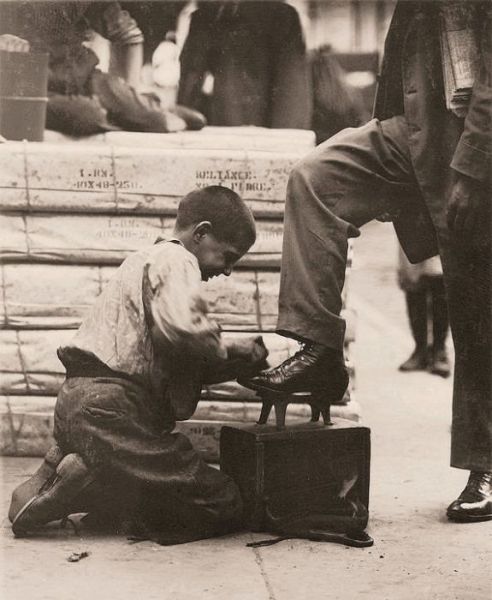2.
Timinator 15 year s ago
Most of these photo's aren't at "work". Most of them are children of immigrants who came to America for a better life...in 1904 the National Child Labor Committe was trying to keep children out of the work place and in school...this went all the way to the Supreme Court, and the Court ruled that it was a violation of of a childs "right to work", by 1924 there were stricter laws about children working.
5.
seriously? 15 year s ago
yup,
yes, how dare they go to school all day. We should put their still developing lungs, brains and hearts back into the factories.
Delivering the newspaper before or after school isn't comparable to working in a coal mine, and you no doubt made a fair and decent wage for the work you did
yes, how dare they go to school all day. We should put their still developing lungs, brains and hearts back into the factories.
Delivering the newspaper before or after school isn't comparable to working in a coal mine, and you no doubt made a fair and decent wage for the work you did
7.
The Shockwave 15 year s ago
http://www.archives.gov/education/lessons/hine-photos/
Businesses liked to hire children because they worked in unskilled jobs for lower wages than adults, and their small hands made them more adept at handling small parts and tools. Children were seen as part of the family economy. Immigrants and rural migrants often sent their children to work, or worked alongside them. However, child laborers barely experienced their youth. Going to school to prepare for a better future was an opportunity these underage workers rarely enjoyed. As children worked in industrial settings, they began to develop serious health problems. Many child laborers were underweight. Some suffered from stunted growth and curvature of the spine. They developed diseases related to their work environment, such as tuberculosis and bronchitis for those who worked in coal mines or cotton mills. They faced high accident rates due to physical and mental fatigue caused by hard work and long hours.
Businesses liked to hire children because they worked in unskilled jobs for lower wages than adults, and their small hands made them more adept at handling small parts and tools. Children were seen as part of the family economy. Immigrants and rural migrants often sent their children to work, or worked alongside them. However, child laborers barely experienced their youth. Going to school to prepare for a better future was an opportunity these underage workers rarely enjoyed. As children worked in industrial settings, they began to develop serious health problems. Many child laborers were underweight. Some suffered from stunted growth and curvature of the spine. They developed diseases related to their work environment, such as tuberculosis and bronchitis for those who worked in coal mines or cotton mills. They faced high accident rates due to physical and mental fatigue caused by hard work and long hours.
11.
GOODSTUFF4U 15 year s ago
By the early 1900s many Americans were calling child labor "child slavery" and were demanding an end to it. They argued that long hours of work deprived children of the opportunity of an education to prepare themselves for a better future. Instead, child labor condemmed them to a future of illiteracy, poverty, and continuing misery.




yes, how dare they go to school all day. We should put their still developing lungs, brains and hearts back into the factories.
Delivering the newspaper before or after school isn't comparable to working in a coal mine, and you no doubt made a fair and decent wage for the work you did
School all day? Since when? I picked cotton which was by the pound and my parents received the money.
Businesses liked to hire children because they worked in unskilled jobs for lower wages than adults, and their small hands made them more adept at handling small parts and tools. Children were seen as part of the family economy. Immigrants and rural migrants often sent their children to work, or worked alongside them. However, child laborers barely experienced their youth. Going to school to prepare for a better future was an opportunity these underage workers rarely enjoyed. As children worked in industrial settings, they began to develop serious health problems. Many child laborers were underweight. Some suffered from stunted growth and curvature of the spine. They developed diseases related to their work environment, such as tuberculosis and bronchitis for those who worked in coal mines or cotton mills. They faced high accident rates due to physical and mental fatigue caused by hard work and long hours.